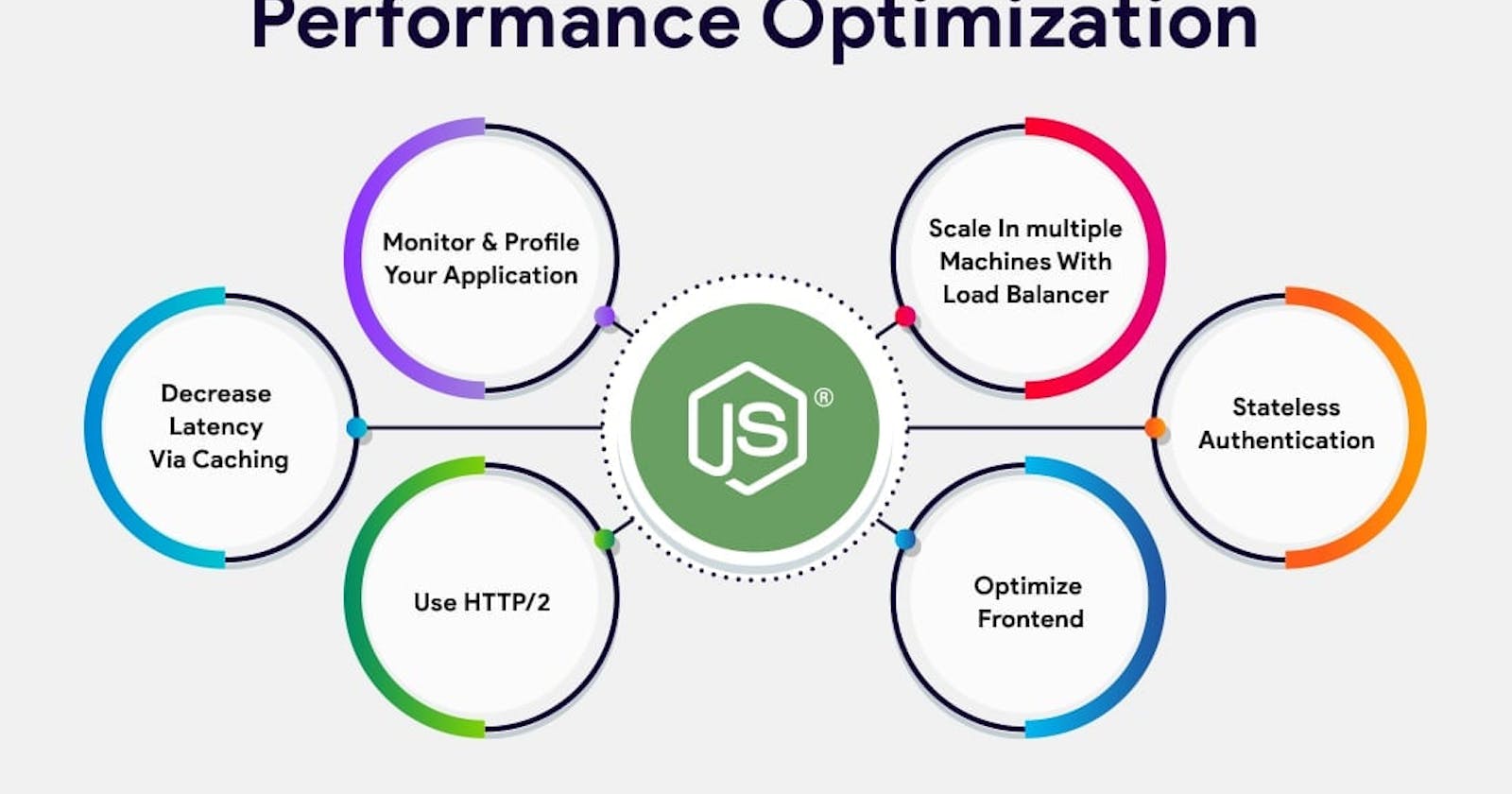If you enjoy this topic, you will probably like my articles, tweets, and stuff. If you're wondering, check out my YouTube channel and don't forget to subscribe and follow since I'm offering programming and motivating tools and information to help you achieve your dreams.
Performance optimization is crucial for building high-performance and scalable Node.js applications. There are several techniques that developers can use to optimize the performance of their Node.js applications, including:
Profiling and monitoring: The first step in optimizing performance is to understand where the bottlenecks are in your application. Profiling and monitoring tools such as the Node.js built-in profiler,
perf_hooks, and external tools likenode-cliniccan help you identify slow code paths and resource-intensive operations.Caching: Caching is a powerful technique for improving performance in Node.js applications. By caching frequently accessed data, you can avoid unnecessary database queries and reduce the load on your system.
const cache = require('memory-cache');
const value = cache.get('key');
if (value) {
// use the cached value
} else {
// compute the value and cache it
const newValue = expensiveComputation();
cache.put('key', newValue, duration);
}
- Asynchronous programming: Node.js is built on top of the JavaScript event loop, and it's important to take advantage of this by using asynchronous programming techniques. Instead of blocking the event loop with synchronous operations, you can use the
asyncandawaitkeywords to perform operations in the background.
const fs = require('fs').promises;
async function readFile(file) {
try {
const data = await fs.readFile(file, 'utf8');
console.log(data);
} catch (err) {
console.error(err);
}
}
- Cluster: Node.js is single-threaded and it's not very efficient when it comes to utilizing all the available resources of a machine. By using the
clustermodule, you can create multiple worker processes that can take full advantage of multi-core systems. This can greatly improve the performance of your application.
const cluster = require('cluster');
const http = require('http');
const numCPUs = require('os').cpus().length;
if (cluster.isMaster) {
console.log(`Master ${process.pid} is running`);
// Fork workers.
for (let i = 0; i < numCPUs; i++) {
cluster.fork();
}
cluster.on('exit', (worker, code, signal) => {
console.log(`worker ${worker.process.pid} died`);
});
} else {
// Workers can share any TCP connection
// In this case it is an HTTP server.
http.createServer((req, res) => {
res.writeHead(200);
res.end('hello world\n');
}).listen(8000);
Conclusion
Minimizing the number of dependencies: The more dependencies an application has, the more resources it will consume. Try to use only the necessary dependencies and keep them up-to-date.
Caching: Caching can significantly improve the performance of an application by reducing the number of database queries and network requests.
Profiling: Profiling is the process of analyzing an application's performance to identify bottlenecks. Node.js provides built-in tools such as the built-in profiler and external tools like the Node.js Performance Profiler to help identify performance issues.
Asynchronous programming: Node.js is built on the event-driven, non-blocking I/O model. To take full advantage of Node.js, it is important to use asynchronous programming techniques, such as callbacks and promises, to avoid blocking the event loop.
Use of a Content Delivery Network (CDN): A CDN can help distribute content to users from a location that is geographically closer to them, reducing load times and improving performance.
Use of a process manager: Using a process manager like PM2 or Forever can help keep your application running smoothly and automatically recover from crashes.
Use of a load balancer: Using a load balancer can help distribute traffic across multiple servers, improving performance and scalability.
It's worth noting that performance optimization is an iterative process and requires continuous monitoring and testing.
If you enjoy this topic, you will probably like my articles, tweets, and stuff. If you're wondering, check out my YouTube channel and don't forget to subscribe and follow since I'm offering programming and motivating tools and information to help you achieve your dreams.
